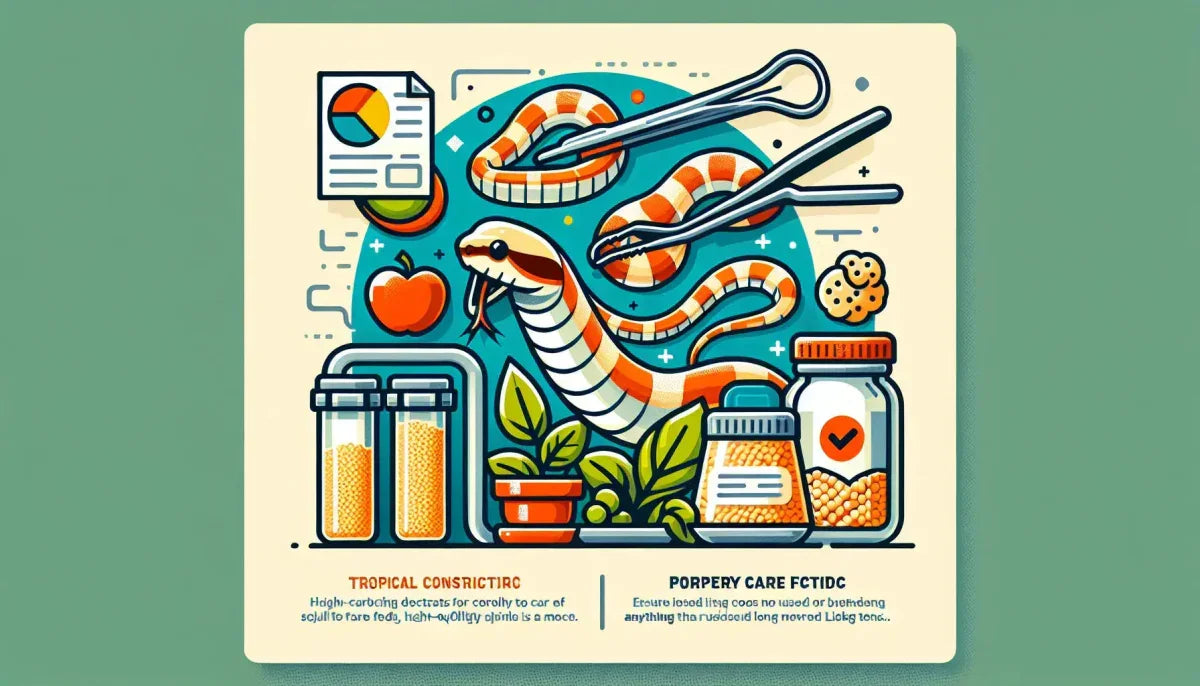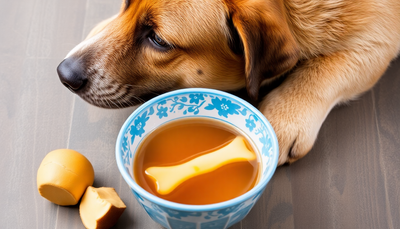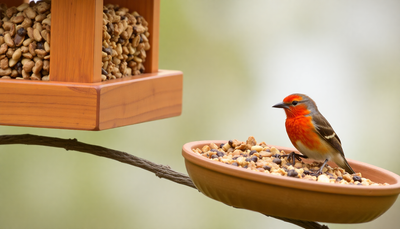
When it comes to snake feeding, there is no room for compromise. Proper feeding is essential for the health and well-being of these incredible reptiles. Whether you're a seasoned snake owner or considering bringing one into your life, understanding the importance of snake feeding is crucial.
Feeding snakes the right diet not only ensures they receive the necessary nutrients, but it also helps maintain their overall health. From the types of food to the feeding schedule, there are several factors to consider for optimal snake care.
In this comprehensive guide, we will delve into the world of snake feeding and provide you with expert tips and insights. We'll explore the best food options, discuss feeding methods, and address common concerns such as live prey and water intake. By the end, you'll have a solid understanding of how to keep your snake healthy and thriving through proper feeding.
So, let's embark on this snake feeding journey together and ensure your scaly friend receives the nourishment they need.
Understanding Snake Diet
Snakes are fascinating creatures with unique dietary needs. In this section, we will delve into the various aspects of snake diets, including their natural diet in the wild, different types of snake diets, and the importance of researching the specific dietary needs of your snake species.
Overview of the Natural Diet of Snakes in the Wild
To understand the dietary requirements of snakes in captivity, it is essential to first explore their natural diet in the wild. Snakes are primarily carnivorous, meaning they feed on other animals. Their prey can vary depending on the species and size of the snake, but common food sources include rodents, birds, lizards, and even other snakes.
Snakes have unique adaptations that allow them to capture and consume their prey. They are skilled hunters, using their keen sense of smell and heat-sensing pits to locate and ambush their victims. Once caught, snakes use their powerful jaws and teeth to swallow their prey whole. Some snake species, such as constrictors, will squeeze their prey to subdue it before swallowing.
Discussing Different Types of Snake Diets
While most snakes are carnivorous, there are some exceptions. Certain snake species have evolved to have different dietary preferences, making them either herbivorous or omnivorous.
Herbivorous Snakes
Herbivorous snakes, also known as colubrids, primarily feed on plants and vegetation. They have specialized teeth and digestive systems that allow them to break down and extract nutrients from plant matter. Some examples of herbivorous snakes include the green vine snake and the African egg-eating snake.
Omnivorous Snakes
Omnivorous snakes have a more varied diet, incorporating both animal and plant matter into their meals. They have adapted to consume a mix of prey, such as insects, small mammals, fruits, and vegetation. The common garter snake is an example of an omnivorous snake.
It is important to note that the majority of snake species are carnivorous, so if you are considering keeping a snake as a pet, it is essential to research the specific dietary needs of the species you are interested in.
Importance of Researching the Specific Dietary Needs of Your Snake Species
Feeding your snake a proper diet is crucial for its overall health and well-being. Each snake species has its own specific dietary requirements, and understanding these needs is essential for providing the best care possible.
Researching the specific dietary needs of your snake species involves learning about the types of prey they eat in the wild, the frequency of feeding, and any specific nutritional requirements. Some snakes may require a diet consisting mainly of rodents, while others may need a more varied menu that includes birds or fish.
Additionally, it is important to consider the size of the prey relative to the size of your snake. Feeding a snake prey that is too large can lead to regurgitation or digestive issues, while prey that is too small may not provide enough nutrition.
By researching and understanding the specific dietary needs of your snake, you can ensure that you are providing a well-balanced and appropriate diet. This will contribute to their overall health, vitality, and longevity.
Choosing the Right Food for Your Snake
When it comes to feeding your snake, it's essential to choose the right food to ensure their health and well-being. In this section, we will discuss the different food options available for snakes, considerations for selecting the appropriate size and type of food, and the importance of offering a varied diet for proper nutrition.
Discussing Different Food Options
- Dry and freeze-dried foods: Convenient options with longer shelf life and easy storage. They provide necessary nutrients but may not be as palatable for some snakes.
- Frozen prey: Resembles the natural diet of snakes and provides a more natural feeding experience.
- Live prey: The most natural option but comes with risks such as potential injury to the snake during feeding.
Considerations for Selecting the Appropriate Size and Type of Food
When selecting the size and type of food for your snake, it's crucial to consider the snake's age, size, and species. Feeding them the wrong size or type of food can lead to health problems.
- For young snakes, smaller prey items such as pinky mice or small insects are suitable.
- As snakes grow, the size of the prey should increase accordingly.
- Don't feed your snake anything larger than their girth to avoid digestive issues or regurgitation.
- Select prey appropriate for your snake's species to ensure they receive the necessary nutrients.
Highlighting the Importance of Offering a Varied Diet
Offering a varied diet is crucial for snakes to receive a balanced and nutritious meal. Feeding them the same type of food all the time can lead to nutritional deficiencies and health issues.
- Include different types of rodents such as mice, rats, and chicks for larger snakes.
- Include other food sources like insects or fish to provide additional nutrients.
- Vary the size of the prey to promote exercise and prevent obesity.
Choosing the right food for your snake is essential for their overall health and well-being. Understanding the different food options available, considering the appropriate size and type of food, and offering a varied diet will help ensure that your snake receives the necessary nutrients for a long and healthy life.
If you're looking for high-quality reptile products, including food options and care supplies, be sure to check out our website. We offer a wide range of products from top brands like Komodo and Zilla, all designed to enhance your reptile's habitat. Plus, take advantage of our discounts of 30% or more on selected items, making it a cost-effective option for reptile owners. Visit Komodo reptile products or explore the Zilla Basking Platform Filter Small and Zilla Micro Reptile and Amphibian Habitats Arboreal for all your reptile needs.
Feeding Frequency and Portion Size
When it comes to feeding your pet snake, determining the appropriate feeding frequency and portion size is crucial for its health and well-being. In this section, we will explore the guidelines for feeding frequency for different snake species and discuss the factors that influence portion size, such as the snake's age, size, and activity level. We will also provide tips for monitoring your snake's weight and adjusting its feeding accordingly.
Guidelines for Feeding Frequency
The feeding frequency for snakes can vary depending on the species, age, and size of the snake. While some snakes may require feeding once every 7-10 days, others may only need to be fed once every 2-3 weeks. It is important to research the specific feeding requirements of your snake species to ensure you are providing the appropriate frequency.
One way to determine the appropriate feeding frequency is to observe your snake's behavior and appetite. If your snake readily consumes its meal and shows signs of hunger, such as actively seeking food or exhibiting a voracious appetite, it may be an indication that it requires more frequent feedings. On the other hand, if your snake shows disinterest in food and refuses to eat, it may be a sign that it requires less frequent feedings.
Factors Influencing Portion Size
The portion size of your snake's meal is influenced by several factors, including its age, size, and activity level. Younger snakes generally require smaller meals compared to adult snakes, as they are still growing and developing. As snakes grow, their appetite and portion size increase accordingly.
Another factor to consider is the size of your snake. Larger snakes naturally require larger meals to meet their nutritional needs. It is important to select prey items that are appropriate in size and proportionate to your snake's size.
The activity level of your snake also plays a role in determining portion size. Snakes that are more active and constantly on the move may require larger meals to sustain their energy levels. Conversely, snakes that are less active or in a state of brumation (a period of reduced activity and metabolism) may require smaller meals.
Monitoring Weight and Adjusting Feeding
Regularly monitoring your snake's weight is essential for ensuring it remains healthy and at an appropriate weight. An increase or decrease in weight can indicate whether you need to adjust the feeding frequency or portion size.
To monitor your snake's weight, you can use a digital scale specifically designed for weighing reptiles. Weigh your snake regularly, ideally once a month, and keep a record of its weight. This will help you track any changes over time and make adjustments to its feeding regimen accordingly.
If your snake is consistently gaining weight, it may be an indication that you need to reduce the feeding frequency or portion size. On the other hand, if your snake is losing weight or appears undernourished, it may be necessary to increase the feeding frequency or portion size.
Feeding frequency and portion size are important factors to consider when caring for your pet snake. By following the guidelines for feeding frequency, considering the factors that influence portion size, and monitoring your snake's weight, you can ensure that your snake receives the appropriate amount of food to maintain its health and well-being. Remember, each snake species is unique, so it is essential to research and understand the specific feeding requirements of your snake to provide the best care possible.
Feeding Techniques and Best Practices
Feeding your snake properly is crucial for its health and well-being. In this section, we will discuss some important techniques and best practices to ensure the safety of both the snake and the owner. We will also explore the pros and cons of feeding live prey versus pre-killed or pre-frozen prey. Additionally, we will highlight the significance of using feeding tools such as tongs and forceps to prevent accidental bites.
Proper Handling Techniques for Feeding Safety
When it comes to feeding your snake, it's essential to handle them correctly to avoid any potential risks. Snakes can become defensive or agitated during feeding, so it's important to approach them with care. One of the best practices is to use a snake hook or snake tongs to gently guide the snake to its feeding area. This helps to maintain a safe distance between you and the snake, reducing the chances of being bitten.
Another technique to ensure feeding safety is to create a separate feeding enclosure for your snake. This can be a designated feeding tank or a sectioned-off area within their enclosure. By doing this, you can train your snake to associate the feeding area with food, minimizing the risk of accidental bites when reaching into their regular habitat.
Feeding Prey Options: Live or Pre-Killed/Pre-Frozen?
Now let's discuss the options for feeding your snake. One common debate among snake owners is whether to feed live prey or pre-killed/pre-frozen prey. Both methods have their pros and cons, and the choice ultimately depends on the preferences of the snake and the owner.
Feeding Live Prey
Feeding live prey can provide a more natural hunting experience for the snake. It allows them to exhibit their natural predatory instincts, which can be beneficial for their mental and physical stimulation. However, there are risks associated with live prey, such as the potential for the snake to be injured by the prey's defensive behaviors. Live prey can also pose a risk to the snake owner, as they may accidentally bite or scratch during feeding.
Feeding Pre-Killed/Pre-Frozen Prey
On the other hand, feeding pre-killed or pre-frozen prey offers a safer alternative. It eliminates the risk of injury to both the snake and the owner. Pre-killed or pre-frozen prey can also be more convenient for snake owners, as they can be easily stored in the freezer and thawed when needed. It's important to note that some snakes may be less interested in pre-killed or pre-frozen prey, as they lack the movement and scent of live prey. In such cases, it may be necessary to entice the snake by using techniques like scenting or warming the prey.
Using Feeding Tools to Prevent Accidental Bites
Feeding tools, such as tongs or forceps, are indispensable when it comes to safely feeding your snake. These tools allow you to keep a safe distance from the snake's mouth, minimizing the risk of accidental bites. When using feeding tools, it's important to choose ones that are appropriate for the size of your snake and the prey being offered.
To use feeding tools effectively, gently grasp the prey item with the tool and present it to the snake. Be patient and allow the snake to strike and constrict the prey at its own pace. Avoid jerking or pulling the prey away from the snake, as this can cause stress and potentially harm the snake.
Feeding your snake requires proper techniques and practices to ensure the safety of both the snake and the owner. By employing proper handling techniques, creating a separate feeding enclosure, and using feeding tools, you can minimize the risk of accidental bites during feeding. When it comes to feeding options, the choice between live prey and pre-killed/pre-frozen prey depends on the preferences of the snake and the owner. Lastly, feeding tools such as tongs and forceps are essential for safely presenting the prey to the snake. Remember, always prioritize the well-being and safety of your snake when feeding them.
Providing Fresh Water
One of the most important aspects of reptile care is ensuring that they have access to clean and fresh water at all times. Just like humans, reptiles need water to survive and thrive. In this section, we will emphasize the importance of offering clean, fresh water to your reptile and discuss different water bowl options and proper maintenance for hygiene.
Importance of Clean, Fresh Water
Reptiles rely on water for various bodily functions, including digestion, hydration, and regulating body temperature. It is crucial to provide them with clean water that is free from contaminants and impurities. Water quality plays a significant role in the overall health and well-being of your reptile.
Key Points:
- Water is essential for reptiles' bodily functions.
- Clean water is necessary for their overall health and well-being.
- Tap water may contain chemicals and heavy metals that could be harmful.
- Filtered or purified water is recommended for reptiles.
Water Bowl Options and Maintenance
Now that we understand the importance of clean water, let's explore different water bowl options and proper maintenance for hygiene.
-
Water Bowl Options:
There are various water bowl options available in the market, each with its advantages and disadvantages. Here are a few popular choices:
- Ceramic Bowls: Ceramic bowls are a common choice for reptile owners. They are sturdy, easy to clean, and come in different sizes and shapes to accommodate different reptile species. Additionally, ceramic bowls are heavy, making it difficult for your reptile to tip them over.
- Plastic Bowls: Plastic bowls are lightweight and affordable. However, they may not be the best option for all reptiles, as some reptiles may chew on the plastic, leading to potential health issues. If you choose a plastic bowl, ensure it is made from non-toxic materials and monitor your reptile closely.
- Stainless Steel Bowls: Stainless steel bowls are durable, easy to clean, and resistant to scratching. They are a hygienic option as they do not harbor bacteria or mold. Additionally, they are safe for reptiles that may chew on their bowls.
-
Proper Maintenance:
Regardless of the type of water bowl you choose, proper maintenance is essential to ensure your reptile has access to clean water. Here are a few tips:
- Regular Cleaning: Clean the water bowl regularly to remove any debris, algae, or bacteria buildup. Use a mild detergent and rinse thoroughly to avoid any residue that could be harmful to your reptile.
- Water Changes: Change the water in the bowl daily to ensure freshness. Reptiles may defecate or contaminate the water with food particles, so regular water changes are necessary.
- Bowl Placement: Place the water bowl in a location where it is easily accessible to your reptile but away from areas where they may soil it with substrate or waste. This will help maintain water cleanliness and prevent accidental spills.
Offering clean, fresh water is crucial for the health and well-being of your reptile. Choose the appropriate water bowl option based on your reptile's needs and ensure regular maintenance to provide them with a safe and hygienic water source. By prioritizing their hydration needs, you are contributing to their overall health and happiness.
Monitoring a Snake's Health and Appetite
One of the most important aspects of keeping a snake healthy is monitoring its health and appetite. By paying close attention to your snake's behavior and feeding habits, you can ensure that it stays happy and well-fed. In this section, we will explore some key points related to monitoring a snake's health and appetite.
Signs of a Healthy and Well-Fed Snake
Keeping an eye out for signs of a healthy and well-fed snake is essential for snake owners. Here are some indicators to look for:
- A healthy body weight: A snake that is well-fed will have a sturdy body and feel muscular when handled.
- Smooth skin: The snake's skin should be smooth and free from any wounds or lesions.
- Regular shedding cycle: Snakes shed their skin periodically as they grow, and a healthy snake will shed its skin in one piece.
If you notice that your snake is having difficulty shedding or is shedding in patches, it could be a sign of an underlying health issue.
Common Health Issues Related to Feeding and How to Address Them
While snakes are generally hardy animals, they can still experience health issues related to feeding. Here are some common issues and how to address them:
- Regurgitation: This occurs when a snake vomits its food shortly after eating. It can be caused by overfeeding, improper temperatures in the enclosure, or stress. If your snake regurgitates its food, it is important to address the underlying cause and adjust its feeding routine accordingly.
- Appetite loss or refusal to eat: Snakes may go off their food for various reasons, including stress, illness, or environmental changes. If your snake stops eating, it is crucial to monitor its behavior and consult with a veterinarian if necessary.
Tips for Recognizing Signs of Appetite Loss or Refusal to Eat
Recognizing signs of appetite loss or refusal to eat is vital for snake owners. Here are some tips to help you identify these signs:
- Lack of interest in food during feeding time: If your snake consistently ignores or avoids its food, it could be a sign of appetite loss.
- Weight loss or decrease in body condition: If you notice weight loss or a decrease in body condition, it may be time to investigate further.
- Changes in behavior: Increased hiding or decreased activity can be indicators of appetite loss or distress.
To conclude, monitoring a snake's health and appetite is crucial for its overall well-being. By paying attention to signs of a healthy and well-fed snake, addressing common health issues related to feeding, and recognizing signs of appetite loss or refusal to eat, you can ensure that your snake remains healthy and happy. Remember to consult with a veterinarian if you have any concerns about your snake's health or feeding habits.
Creating a Stress-Free Feeding Environment
Feeding time for your snake is not just about providing sustenance, it is also a crucial opportunity to create a calm and secure environment for your reptile. A stress-free feeding environment is essential for the overall well-being and health of your snake. In this section, we will discuss the significance of a calm and secure environment during feeding and provide tips for reducing stress during this important activity.
The Significance of a Calm and Secure Environment during Feeding
Snakes are sensitive creatures, and any disruptions or disturbances during feeding can cause them stress and anxiety. It is important to create a calm and secure environment to help your snake feel safe and comfortable during feeding. When snakes feel threatened or stressed, they may refuse to eat or become defensive. This can lead to issues with proper nutrition and overall health. By providing a calm and secure environment, you can help ensure that your snake feels relaxed and at ease during feeding.
Tips for Reducing Stress during Feeding
To create a stress-free feeding environment for your snake, consider the following tips:
- Find a Quiet Space: Choose a quiet area of your home where your snake can eat without distractions. Avoid high-traffic areas or places with loud noises that could startle your snake.
- Dim the Lighting: Snakes are most active during the night, so dimming the lights during feeding time can help create a more natural environment. This can help your snake feel more comfortable and less exposed.
- Maintain Consistency: Snakes are creatures of habit, and they thrive on routine. Try to feed your snake at the same time each day or on a consistent schedule. This predictability can help reduce stress and make feeding time more enjoyable for your snake.
- Avoid Disturbances or Handling: After feeding, it is important to give your snake time to digest its meal without any disturbances or handling. Handling your snake immediately after a meal can cause stress and may even lead to regurgitation. Allow your snake to rest and digest in its enclosure for a few hours before any interaction.
By implementing these tips, you can create a stress-free feeding environment that promotes the well-being of your snake.
The Importance of Avoiding Disturbances or Handling after Feeding
Disturbances or handling immediately after feeding can have negative effects on your snake's digestive process. Snakes require a period of rest to properly digest their meals, and any disturbances can disrupt this process. Handling a snake after feeding can also increase the risk of regurgitation, where the snake brings back up its meal. Regurgitation not only indicates a potential health issue but also means that your snake is not receiving the necessary nutrients from its food.
It is crucial to allow your snake to rest and digest in a calm and secure environment after feeding. Avoid any handling or disturbances for at least a few hours to ensure that your snake can properly process its meal.
Handling Regimen After Feeding
When it comes to handling snakes after they have been fed, it is important to understand the significance of allowing them to digest their food undisturbed. Snakes have a unique digestive system that requires time and energy to break down and absorb their meals properly. Interrupting this process can lead to various health issues, including regurgitation.
Snakes are ectothermic animals, meaning they rely on external sources of heat to regulate their body temperature. After a meal, their metabolism increases, and they need to raise their body temperature to facilitate digestion. This process is known as thermogenesis. By basking in warm areas, snakes can effectively digest their food.
Disturbing a snake's digestion process can have serious consequences. If a snake is handled too soon after feeding, it can cause the undigested food to be regurgitated. This not only puts stress on the snake's body but also wastes valuable energy and nutrients that were consumed during the feeding.
To ensure the health and well-being of your snake, it is recommended to wait at least 48 hours before handling them after a meal. This timeframe allows for sufficient digestion and minimizes the risk of regurgitation. However, it is important to note that this timeframe may vary depending on the size of the snake and the type of prey they consumed.
Safe handling practices are crucial to minimize the risk of regurgitation. When handling a snake, it is essential to support their body properly and avoid any sudden movements or excessive pressure. Snakes are sensitive creatures, and any stress or discomfort can impact their digestion.
In addition to handling techniques, providing a suitable and stress-free environment for your snake is vital. Ensure that the enclosure is properly set up with appropriate heat sources and hiding spots. A comfortable and secure habitat will contribute to the snake's overall well-being and aid in the digestion process.
It is also worth noting that some snakes may be more prone to regurgitation than others. Certain species, such as ball pythons, are known to be more sensitive when it comes to handling after feeding. Understanding the specific needs and behaviors of your snake will help you establish a proper handling regimen.
In conclusion , allowing snakes to digest their food undisturbed is crucial for their overall health and well-being. Interrupting the digestion process can lead to regurgitation and potential health complications. Waiting at least 48 hours before handling a snake after feeding, along with safe handling practices, can help minimize the risk of regurgitation and ensure the snake's digestive system functions properly. Remember to provide a stress-free environment that supports the snake's natural behavior and needs. By following these guidelines, you can create a positive and healthy handling regimen for your snake.
Key Tips for Successful Snake Feeding
In conclusion, proper nutrition and care are crucial for the overall health and well-being of snakes. Here are the key tips for successful snake feeding:
- Choose the right food: Consider options like dry, freeze-dried, frozen, gel, and live food, depending on your snake's species and preferences.
- Feed the right amount: It's important to provide appropriate portion sizes to avoid overfeeding or underfeeding.
- Observe hunger cues: Pay attention to your snake's behavior and body language to determine when it's hungry and ready to eat.
- Offer variety: Introduce a variety of food options to ensure a well-rounded diet and to prevent boredom.
- Maintain proper hygiene: Clean the feeding area and food dishes regularly to prevent the growth of harmful bacteria.
- Provide fresh water: Ensure your snake has access to clean and fresh water at all times.
- Create a stress-free environment: Minimize disturbances during feeding time and provide a calm and quiet space for your snake to eat.
- Consider feeding techniques: Depending on your snake's needs, you can choose between hand-feeding, tongs, or leaving the food in its enclosure.
- Monitor weight and health: Regularly check your snake's weight and overall health to ensure it is thriving.
- Seek veterinary advice: If you have any concerns about your snake's feeding habits or health, consult a reptile veterinarian for professional guidance.
Remember, a well-fed and healthy snake is a happy snake. As the saying goes, " A well-fed snake is a contented snake. " So, take the time to provide your scaly friend with the proper nutrition and care it deserves.
To explore a wide range of reptile products and accessories, including reptile care and health products, visit our website. We offer a diverse selection from top brands like Komodo and Zilla. Check out the Komodo reptile products collection and the Zilla Basking Platform Filter Small and Zilla Micro Reptile and Amphibian Habitats Arboreal products for all your snake's needs. Happy feeding!
CTA: Enhance your snake's habitat with high-quality and visually appealing reptile products. Visit our website to explore a wide range of reptile supplies and accessories. Shop now and enjoy discounts of 30% or more on selected items!






